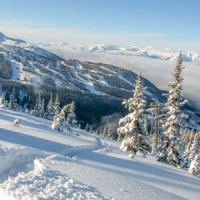
Journalism is said to be the first draft of history. But journalism doesn’t just record history, it shapes it. In the Vietnam War it was Nick Ut’s photograph of the Napalm girl that was a major catalyst in America's withdrawal from Vietnam. In Beijing it was Jeff Widener's picture of the Tank Man in Tiananmen square. In the Syrian Civil war it was Nikhil Demir’s heartbreaking image of 3 year old refugee Alan Kurdi.
However, in recent times, a journalist's journey to document injustice and global conflict has become not only difficult, but even life costing. One such victim is Maks Levin, in Ukraine. Maks Levin was brutally tortured and shot in cold blood by Russian troops. Maks died with a camera still in his hands, he had devoted his life to sharing the stories of the most vulnerable, yet the cruel irony is that his story has been forgotten.
But this isn’t just happening to journalists in Ukraine: it’s happening to journalists in Iran, in Mexico, and in Afghanistan. Because in this pursuit of the truth all around the world, Maks is only one journalist that has been killed out of thousands.
In the words of the United Nations, conflict is on the rise. But as violence continues to ravage nations, the first casualty of war is often said to be the truth. But without it, we have to ask ourselves what we are left with to accurately inform us about injustice and inspire global solutions. In light of that, it is important to understand the issues that a journalist reporting on conflict undergoes.
To understand such dangers, it is first important to understand the conflict zones these journalists report in. According to the United Nations these are areas that pose a severe risk to one’s safety due to political instability, war, or violence. Today, there are over 30 severe conflicts taking place globally from Ethiopia’s civil war to conflict in Colombia.
In opting to report in areas of such instability over the safety of their own home communities, journalists like Maks are risking their lives to advocate for the most vulnerable. So then the question becomes this; how did we get to a point where Maks was shot in cold blood multiple times?
Answering this question requires an examination of the first of 3 challenges a journalist faces: a dire lack of training. From Canada to Japan, the typical route to becoming a journalist requires a journalism degree. Consequently, teaching revolves primarily on research skills and analytical writing. In almost no syllabus though, is there any safety training on first aid, risk assessments, and ambush evasion, leaving journalists like Maks unable to understand the true risk of their environments or how to maximize their chance of survival.
Additionally, the second hurdle that journalists face is the lack of life saving protective gear. To save money companies like the New York Times will contract and pay independent journalists located close to the conflict for the rights to their photos, and interviews. However, because of contract laws media outlets aren’t legally responsible for providing safety gear for these journalists. Consequently, journalists like Maks lack bulletproof helmets, vests, and medical kits which we know can be life saving, but also cost thousands.
However, the last challenge a conflict journalist faces is far more sinister: being the active target of corrupt governments or terrorist groups. Journalists often write articles critiquing corruption, thus many autocratic leaders see them as a threat to their legitimacy and will oftentimes unleash the force of their militaries to capture or even kill these reporters. In the past year alone, a sickening 360 plus journalists were detained globally, with numbers rising year after year.
It becomes clear that intervention to protect these reporters by world leaders, corporations, and institutions like the United Nations is not only warranted, but necessary. Because without these reporters all we are left with are silent stories, silent voices, silent histories.


